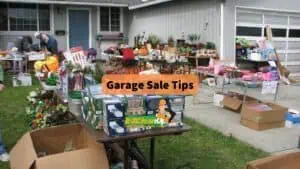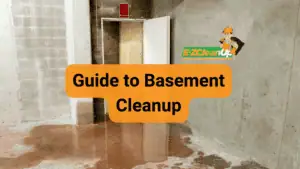Whether you’re downsizing, preparing for a move, or simply craving a fresh start, a whole-house cleanout can feel overwhelming. But with the right preparation and strategy, you can transform this daunting task into a manageable, even rewarding, experience. This comprehensive guide will walk you through every step of preparing for a successful whole-house cleanout.
Why Whole-House Cleanouts Matter More Than Ever
The average American home contains approximately 300,000 items, and this staggering accumulation takes a serious toll on our wellbeing. 54% of Americans report feeling overwhelmed by the clutter in their homes, transforming what should be our sanctuary into a source of stress.
The good news? Getting rid of clutter eliminates 40% of housework in the average home. That means less time cleaning and more time for the things that truly matter. Beyond the practical benefits, decluttering creates mental space, reduces anxiety, and helps you reclaim control of your environment.
Step 1: Set Clear Goals and Establish Your Timeline
Before you dive in, take time to identify your “why.” Are you preparing your home for sale? Helping a family member downsize? Simply craving a more minimalist lifestyle? Having a clear goal in mind can provide valuable guidance and keep you motivated every step of the way.
Once you’ve defined your purpose, create a realistic timeline. Schedule plenty of time on your calendar and pace yourself—don’t expect to clean out your home in a single weekend. Breaking the project into manageable phases prevents burnout and ensures thorough results.
Timeline Planning Tips:
- Allocate 1-2 weeks for planning and preparation
- Schedule 2-4 hours per room, depending on size and clutter level
- Build in buffer time for unexpected discoveries or emotional items
- Plan donation pickups and junk removal services in advance
Step 2: Conduct a Comprehensive Home Assessment
Walk through every room and take inventory, noting the larger items that need to go and gauging how much work each room will require. This initial assessment helps you:
- Identify which rooms need the most attention
- Estimate the volume of items to remove
- Determine whether you’ll need professional help or a dumpster rental
- Create a prioritized room-by-room plan
During your walkthrough, take photos of each space. These “before” pictures will not only document your starting point but also serve as powerful motivation when the process gets challenging.
Step 3: Gather Essential Supplies
Start with basics like boxes, trash bags, and cleaning products. Having the right supplies on hand prevents frustrating interruptions and keeps you focused on the task at hand.
Your Cleanout Supply Checklist:
- Heavy-duty trash bags (multiple sizes)
- Cardboard boxes or plastic bins
- Labels and permanent markers
- Packing tape and scissors
- Cleaning supplies (all-purpose cleaner, disinfectant, microfiber cloths)
- Work gloves
- Dust masks (especially for attics and basements)
- Hand truck or dolly for heavy items
Step 4: Create a Sorting System
Start by marking boxes or specific areas for items you’ll ‘keep,’ those you’ll ‘donate,’ what you plan to ‘sell,’ and things that just need to go in the ‘trash’. This four-category system is the foundation of an efficient cleanout.
The Four-Box Method:
- Keep: Items you use regularly and truly need
- Donate: Usable items in good condition that no longer serve you
- Sell: Valuable items you can profit from
- Trash/Recycle: Broken, damaged, or unusable items
A good rule of thumb is if you haven’t touched it in a year, you probably don’t need it. This simple guideline helps cut through emotional attachment and indecision.
Step 5: Plan Your Disposal Strategy
Understanding your disposal options before you begin prevents last-minute scrambling with piles of sorted items.
Donation Options
Research your options before embarking on your cleanout—while most collection centers will accept a wide range of goods, some are more particular and only take certain items. Popular donation destinations include:
- Goodwill and Salvation Army
- Habitat for Humanity ReStores (for furniture and building materials)
- Local homeless shelters and women’s shelters
- Vietnam Veterans of America (pickup service available)
Professional Junk Removal
The average cost for a whole house cleanout typically ranges from $1,200 to $3,000, varying significantly based on the size of your home and the amount of items to be removed. While this represents an investment, professional services can save significant time and physical labor, especially for large-scale cleanouts.
Dumpster Rental
For DIY enthusiasts, renting a residential dumpster offers flexibility and control. This option works particularly well when you’re tackling multiple rooms and need extended time to complete the project.
Step 6: Tackle One Room at a Time
A whole home cleanout can be overwhelming—you need to be clear on your boundaries and time frame and do one room at a time. This focused approach prevents the paralysis that comes from viewing the project as a whole.
Recommended Room Order:
- Start Easy: Begin with a guest room, linen closet, or another low-emotion space to build momentum
- Main Living Areas: Tackle living room, dining room, and kitchen
- Bedrooms: Work through personal spaces methodically
- Storage Spaces: Save attics, basements, and garages for last
Special Considerations for Storage Areas
The attic is the least visited part of the average home, making it an ideal breeding ground for dust or an undiagnosed mold or vermin infestation—wear protective gear when sorting through boxes. The same precautions apply to basements and garages.
Step 7: Handle Hazardous Materials Safely
Proper disposal of hazardous materials is crucial for safety and compliance—separate items like batteries, chemicals, and electronics that require special disposal methods, and research local guidelines and disposal facilities.
Common household hazardous materials include:
- Paint and paint thinners
- Motor oil and automotive fluids
- Pesticides and herbicides
- Batteries (all types)
- Electronics and appliances
- Fluorescent bulbs
- Medications
Most municipalities offer hazardous waste collection days or permanent drop-off locations. Never dispose of these items in regular trash.
Step 8: Stay Organized During the Process
Clear labeling of boxes speeds up the sorting process, making it easier to identify contents. As you work through each room, maintain your sorting system and regularly remove completed boxes from your workspace.
Pro Organization Tips:
- Use color-coded labels for different categories
- Keep a master inventory list of items for sale
- Photograph valuable items as you sort them
- Create a “decision later” box for truly difficult choices (but set a deadline to revisit it)
Step 9: Consider the Emotional Journey
Cleanouts aren’t just physical—they’re deeply emotional. You’re not just sorting objects; you’re processing memories, confronting past purchases, and making difficult decisions about sentimental items.
Strategies for Emotional Items:
- Set aside a specific “memory box” with a size limit
- Take photos of sentimental items before letting them go
- Invite family members to claim inherited items they want
- Give yourself permission to keep what truly matters
- Remember that memories live in your heart, not in objects
Understanding the Investment
While costs vary widely, understanding typical expenses helps with budgeting:
- Cleanout costs can range from $200 to $2,000, with an average estate cleanout costing around $1,250
- DIY cleanouts cost primarily in terms of time and physical effort
- The national average rate for renting a 20-yard junk dumpster is between $268 and $657, while junk hauling services average $136 to $361
Post-Cleanout: Maintaining Your Success
Once the heavy lifting is complete, focus on maintaining your newly organized space. Schedule home cleanouts regularly—regular cleanouts help prevent clutter from accumulating, ensuring that your living spaces remain organized and conducive to a stress-free lifestyle.
Final Thoughts
A whole-house cleanout is more than just removing unwanted items—it’s about creating space for what matters most in your life. With proper planning, the right supplies, and a systematic approach, you can transform overwhelming clutter into an organized, peaceful home environment.
Remember, this is a marathon, not a sprint. Be patient with yourself, celebrate small victories along the way, and don’t hesitate to ask for help when you need it. The freedom and clarity waiting on the other side of this project are well worth the effort.
Ready to reclaim your space? Start with your assessment today, and take that first step toward a clutter-free future.
References
- National Association of Productivity and Organizing Professionals (NAPO) – Professional resources and certified organizer directory
- Becoming Minimalist – Clutter Statistics – Research on household possessions and clutter impact
- Waste Removal USA – House Cleanout Cost Guide – Comprehensive cost breakdowns and planning resources
- Texas Disposal Systems – House Cleanout Guide – Step-by-step cleanout strategies
- Hometown Dumpster Rental – Complete Home Cleanout Checklist – Room-by-room cleanout strategies and safety tips













